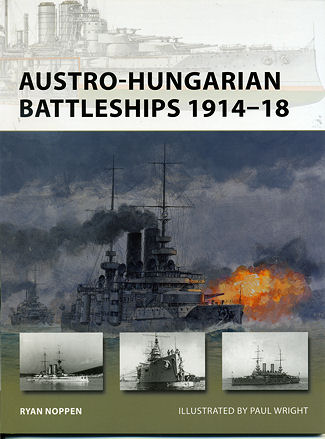 Prior to the
20th century, Austria-Hungary had let its navy lapse. The main reason was a lack
of funding for a big navy and the other was a lack of interest by the leaders of
the two kingdoms. Their long time rival, Italy, had signed a treaty with the
Empire and with that threat thought to be gone, even less emphasis was placed on
having big ships. This changed with Austrian Archduke Franz Ferdinand, the heir
to the throne took power. He was very much pro-navy and realized that
Austria-Hungary needed to project power in order to protect its merchant fleet
and trade in the Adriatic and Mediterranean, especially its trade with the
Levant.
Prior to the
20th century, Austria-Hungary had let its navy lapse. The main reason was a lack
of funding for a big navy and the other was a lack of interest by the leaders of
the two kingdoms. Their long time rival, Italy, had signed a treaty with the
Empire and with that threat thought to be gone, even less emphasis was placed on
having big ships. This changed with Austrian Archduke Franz Ferdinand, the heir
to the throne took power. He was very much pro-navy and realized that
Austria-Hungary needed to project power in order to protect its merchant fleet
and trade in the Adriatic and Mediterranean, especially its trade with the
Levant.
So in the 1890s, plans were put to produce their first
battleships. These were not large ships, and eventually would be little more
than coastal defense ships, but their guns made them superb shore bombardment
ships and it is in this role that they served during WWI. But I am getting ahead
of myself. As time progressed, larger and larger ships were designed and built.
All the time, the designers had to keep in mind that there was not a lot of
money to be had and so these could not be as well armed, as well armored or as
large as the naval planners would have hoped. But they were enough.
When Austria-Hungary became involved in WWI, the
admirals of the fleet knew that their ships would be at a disadvantage against
British, and later Italian ships, so were very careful about when and where they
sortied. There never was a ship to ship battle with these ships. Aside from the
very early ships being used for shore bombardment, the rest of the fleet took up
much of the opposition's fleets as a 'fleet in being'. They were very successful
in this regard, forcing to the Allies to keep ships in the area that they would
have much rather used elsewhere, 'just in case'.
In this latest edition of Osprey's New Vanguard series,
author Ryan Noppen tells us the story of the big ships of the Austro-Hungarian
navy. From their inception through the building of all five classes of ships, we
can see how each subsequent design was an improvement over the ones before it.
Half of the book is devoted to the operational record of these ships and the
various battles in which they were involved. True, most of these actions were
against high value shore targets, but they performed their missions as expected.
A couple were destroyed by Italian torpedo boats, both occasions being ones
where the laxity of security was the cause for loss.
Included in this book are some superlative period
photographs of the men and ships. This is additionally enhanced by the excellent
art work of Paul Wright. It is a well done addition to the series and tells the
story of the interesting, and rarely covered capital ships.
October 2012
For more on the complete line of Osprey books,
visit www.ospreypublishing.com. In the US, it is
Osprey Direct at 44-02 23rd St, Suite 219, Long Island City, NY 11101., where you can
get a catalogue of available books.
If you would like your product reviewed fairly and quickly, please
contact
me or see other details in the Note to
Contributors.
 Prior to the
20th century, Austria-Hungary had let its navy lapse. The main reason was a lack
of funding for a big navy and the other was a lack of interest by the leaders of
the two kingdoms. Their long time rival, Italy, had signed a treaty with the
Empire and with that threat thought to be gone, even less emphasis was placed on
having big ships. This changed with Austrian Archduke Franz Ferdinand, the heir
to the throne took power. He was very much pro-navy and realized that
Austria-Hungary needed to project power in order to protect its merchant fleet
and trade in the Adriatic and Mediterranean, especially its trade with the
Levant.
Prior to the
20th century, Austria-Hungary had let its navy lapse. The main reason was a lack
of funding for a big navy and the other was a lack of interest by the leaders of
the two kingdoms. Their long time rival, Italy, had signed a treaty with the
Empire and with that threat thought to be gone, even less emphasis was placed on
having big ships. This changed with Austrian Archduke Franz Ferdinand, the heir
to the throne took power. He was very much pro-navy and realized that
Austria-Hungary needed to project power in order to protect its merchant fleet
and trade in the Adriatic and Mediterranean, especially its trade with the
Levant.